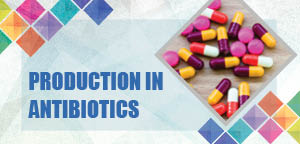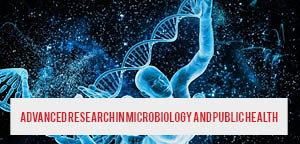Track Categories
The track category is the heading under which your abstract will be reviewed and later published in the conference printed matters if accepted. During the submission process, you will be asked to select one track category for your abstract.
This track deals with the inter disciplinary researches & developments in microbiology and public health. Generally, Microbes play an important role in balancing the health in the society. This session covers the wide area of advanced researches under Microbiology, Epidemiology, Public Health, Clinical Microbiology, Diagnostic Microbiology, Environmental Microbiology, Astro Microbiology, Agriculture Microbiology, Food Microbiology, Molecular Microbiology, Industrial Microbiology, Microbiome, Infectious Diseases and their preventive Measures, Medical Microbiology and many more related fields.
- Track 1-1Soil Microbiology Techniques
- Track 1-2Microbial Insecticides
- Track 1-3Strain Improvement
- Track 1-4Microbiota
- Track 1-5Public Health Studies
- Track 1-6Preventive measures for infectious diseases
- Track 1-7Treatment for HIV/ AIDS/ Ebola - Pathogenic Diseases
Coronaviruses are
Applied Microbiology is the field of study where the microorganisms where used in the production of certain products like Antibiotics, enzymes, Food Products etc., for the benefit for the society. Applied microbiology is the study of the microbial world and the way it interacts with our own. It looks at how we can harness and utilize the powers of the microbes in areas ranging from biotechnology to pest control, to bio-refineries, to pharmaceutical applications. A wide range of microbial bioproducts is possible. This Applied Microbiology session deals with researches in relation with agriculture and soils, animals and animal health, biodefense, biotransformation, biodegradation and bioremediation, biotechnology, environment, food and beverages, medicine and public health, mycology, pharmacy, plants and plant health, probiotics and the intestine and water of all types, Food Microbiology, Molecular Microbiology, Industrial Microbiology, Enzymes, Antibiotics, Vaccines, Protein Production, Recombinant DNA Technology.
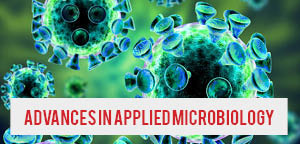
- Track 3-1Fermentation Industrial Microbiology
- Track 3-2Bacteriology
- Track 3-3Microbial Proteins
- Track 3-4Biotransformation
- Track 3-5Nutraceuticals and Nutrigenomics
- Track 3-6Food Microbiology and Food Enzymology
Advances in Microbiology session deals with the latest researches and developments in microbial techniques, Microbial strain improvement, Microbial Engineering, Industrial Microbiology, Medical Microbiology, General Microbiology, Medical Entomology, Anatomy, Physiology, Biochemistry, Pathology, Forensic Medicine and Toxicology, Pharmacology, Community Medicine, Clinical Sciences (Medicine, Surgery, ENT, Orthopedics, Ophthalmology, Radiology,) Medical Biotechnology and Biological Sciences. Microbiology is the study of microorganisms and those being unicellular (single cell), multicellular (cell colony), or acellular (lacking cells) such as bacteria, viruses, archaea, fungi and protozoa. Microbiology encompasses numerous sub-disciplines including virology, parasitology, mycology, bacteriology. biochemistry, physiology, cell biology, ecology, evolution and clinical aspects of microorganisms, including the host response to these agents. The study of microorganisms impinges on all of biology, including geoscience. For many years, research using prokaryotes from both the Bacteria and Archaea domains as model systems has added to the understanding of physiological processes such as growth and metabolism. Thus, through understanding the physiology of prokaryotes, advances in ecology, evolution, and biotechnology have been made. This Session also covers sub sessions like.

- Track 4-1Microbial Enzymes
- Track 4-2Biosensor in Microbes
- Track 4-3Micro-fabrication
- Track 4-4Antibodies Production
- Track 4-5Agriculture Microbiology
Innovation has been a stimulating driver of advances in medication revealing. mechanization, Nano fluidics, imaging, programming and take a look at advances have assumed a stimulating half in showing signs of improvement data, quicker. Is medication revealing at such a propelled state, to the purpose that additional upgrades area unit failed to need any longer or practical? There area unit various feelings on this and an excellent a part of the proof is narrative, however innovation advancement is basic to the modification of the medication revealing method and value talking regarding.
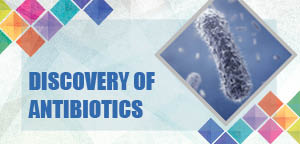
Microorganisms plays an important role in our day today life, with those little creatures. The use of microorganism in large scale production of food and industrial products is being done worldwide. Polysaccharides, polyamides, polyesters and many other varieties of biopolymers are produced by many microorganisms. These are ranging from plastics to viscous solutions. Microorganisms are used in large scale manufacturing of vaccines against diseases like influenza flu, polio, BCG etc. with the evolution of sophisticated technology, identification of specific antigens is being done easily which further helps in development of vaccines with the help of microorganisms. They have used in food products, industries, pharma, Nanotechnology, Biotechnology, Food Technology, Agriculture, Drug Delivery, Medical technology, Microbial Engineering, Enzyme Production, Antibiotics Production, Vaccine Production and many more.
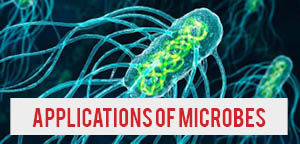
Bioremediation is the process of using organisms to neutralize or remove contamination from waste. It is very important to understand that this form of waste remediation uses no toxic chemicals, although it may use an organism that can be harmful under certain circumstances. Bioremediation is a process used to treat contaminated media, including water, soil and subsurface material, by altering environmental conditions to stimulate growth of microorganisms and degrade the target pollutants. In many cases, bioremediation is less expensive and more sustainable than other remediation alternatives. Bioremediation works by providing these organisms with different materials like fertilizer, oxygen and other conditions to survive. This would help to break the organic pollutant at a faster rate. In other words, bioremediation can help to clean up oil spills. Bioremediation from an ecological perspective. Microbial biodegradation is the use of bioremediation and biotransformation methods to harness the naturally occurring ability of microbial xenobiotic metabolism to degrade, transform or accumulate environmental pollutants, including hydrocarbons (e.g. oil), polychlorinated biphenyls (PCBs), polyaromatic hydrocarbons (PAHs), heterocyclic compounds (such as pyridine or quinoline), pharmaceutical substances, radionuclides and metals. Interest in the microbial biodegradation of pollutants has intensified in recent years and recent major methodological breakthroughs have enabled detailed genomic, metagenomic, proteomic, bioinformatic and other high-throughput analyses of environmentally relevant microorganisms, providing new insights into biodegradative pathways and the ability of organisms to adapt to changing environmental conditions. Biodegradation is the biologically catalyzed modification of an organic chemical's structure.
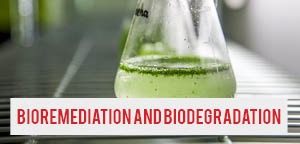
Innovation has been a noteworthy driver of advances in medication disclosure. Computerization, Nano fluidics, imaging, programming and test advances have assumed a noteworthy part in showing signs of improvement information, quicker. Is medication disclosure at such a propelled state, to the point that further upgrades are did not require anymore or practical? There are diverse feelings on this and a great part of the proof is narrative, yet innovation advancement is basic to the change of the medication disclosure process and worth talking about.

Clinical Microbiology is a branch of medical science concerned with the prevention, diagnosis and treatment of infectious diseases. Moreover, this field of science is concerned about various clinical applications of microbes for the improvement of health. There are four kinds of microorganisms that cause infectious disease: bacteria, fungi, parasites and viruses. In this session we can discuss in border view of microbiological aspects of human and animal infections and infestations and in particular their etiological agents, diagnosis, and epidemiology.

Modern biotechnology provides breakthrough products and technologies to combat debilitating and rare diseases, reduce our environmental footprint, feed the hungry, use less and cleaner energy, and have safer, cleaner and more efficient industrial manufacturing processes. Biotechnology is the broad area of science involving living systems and organisms to develop or make products, or "any technological application that uses biological systems, living organisms, or derivatives thereof, to make or modify products or processes for specific use. Biotechnology is all about harnessing the power of living cells and materials for use in environmental, diagnostic, pharmaceutical and agricultural industries. Biotechnology is all about using the raw ingredients of life to help solve society’s problems. It can also commonly be referred to as life sciences or genetic engineering, which involves exploiting cell and tissue culture technologies to produce lots of wonderful things. Depending on the tools and applications, it often overlaps with the (related) fields of molecular biology, bio-engineering, biomedical engineering, biomanufacturing, molecular engineering, etc
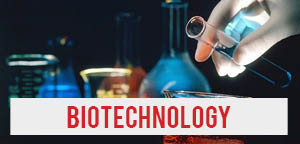
- Track 10-1Environmental Biotechnology
- Track 10-2Medical Biotechnology
- Track 10-3Agrobiotechnology
Environmental microbiology is the study of the composition and physiology of microbial communities in the environment. The environment in this case means the soil, water, air and sediments covering the planet and can also include the animals and plants that inhabit these areas. Environmental microbiology also includes the study of microorganisms that exist in artificial environments such as bioreactors Structure and activities of microbial communities, Microbial interactions and interactions with macroorganisms, Population biology of microorganisms, Microbes and surfaces (adhesion and biofilm formation), Microbial community genetics and evolutionary processes, (Global) element cycles and biogeochemical processes, Microbial life in extreme and unusual little-explored environments, Biofilm Engineering, pollution microbiology, microbially-influenced global changes, extremophiles and life in extreme and unusual little-explored habitats, microbes and surfaces, microbial interactions and interactions with plants, animals and non-living environmental factors, the structure, activities and communal behavior of microbial communities it also integrates with biotechnology.

Genetic engineering is the deliberate manipulation of DNA, using techniques in the laboratory to alter genes in organisms. Even if the organisms being altered are not microbes, the substances and techniques used are often taken from microbes and adapted for use in more complex organisms. Genetic engineering, also called genetic modification or genetic manipulation, is the direct manipulation of an organism's genes using biotechnology. It is a set of technologies used to change the genetic makeup of cells, including the transfer of genes within and across species boundaries to produce improved or novel organisms. New DNA is obtained by either isolating and copying the genetic material of interest using recombinant DNA methods or by artificially synthesising the DNA. A construct is usually created and used to insert this DNA into the host organism. Microbial genetics is a subject area within microbiology and genetic engineering. It studies the genetics of very small (micro) organisms; bacteria, archaea, viruses and some protozoa and fungi. This involves the study of the genotype of microbial species and also the expression system in the form of phenotypes.Using microbes, protocols were developed to insert genes into bacterial plasmids, taking advantage of their fast reproduction, to make biofactories for the gene of interest.Such genetically engineered bacteria can produce pharmaceuticals such as insulin, human growth hormone, interferons and blood clotting factors. Microbes synthesize a variety of enzymes for industrial applications, such as fermented foods, laboratory test reagents, dairy products and many more.
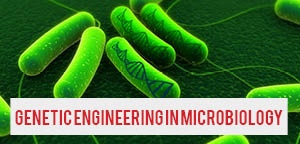
- Track 12-1Microbial Genetics
Industrial microbiology is a branch of biotechnology that applies microbial sciences to create industrial products in mass quantities. There are multiple ways to manipulate a microorganism in order to increase maximum product yields. Introduction of mutations into an organism many be accomplished by introducing them to mutagens. The manipulation of organisms in order to yield a specific product has many applications to the real world like the production of some antibiotics, vitamins, enzymes, amino acids, solvents, alcohol and daily products. Industrial microbiology can be applied for Medical purposes, Food Industry, Fermentation, Agriculture, Biopesticides, Wastewater management, Metabolic Engineering, Chemical applications, Pharmaceutical: develops novel, small-molecule drugs and medical devices
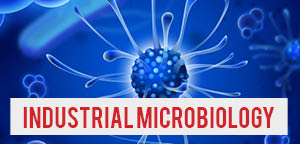
- Track 13-1Microbes in Alternative Energy
Infectious diseases are disorders caused by organisms — such as bacteria, viruses, fungi or parasites. Many organisms live in and on our bodies. They're normally harmless or even helpful, but under certain conditions, some organisms may cause disease. Some of the Infectious Diseases and the microorganisms are Anthrax, Acinetobacter, Aspergillus, Bird Flu, Botulism, Brucellosis, Bubonic Plague, C. Difficile, Campylobacter, Chagas Disease, Chikungunya, Cholera, Cyanophyta, Cyanobacteria, Cystitis, Dengue Fever, Ebola, Enterovirus, Gastroenteritis, Jaundice, Klebsiella, Lemierre's Syndrome, Leptospirosis, Listeria, Lyme Disease, Malaria, Measles, Middle East Respiratory Syndrome, Molluscum Contagiosum, Necrotizing Fasciitis, Norovirus, P. aeruginosa, Pinworms, Pyelonephritis, Rabies, Salmonella, Severe acute respiratory syndrome, Scabies, Sepsis, Staph/MRSA, Streptococcus, Tetanus, Thrush, Toxoplasmosis, Typhoid Fever, VRE, West Nile, Whooping Cough, Yellow Fever, Zika and some of the infectious diseases can be vaccinated.
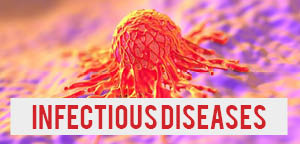
Medical microbiology, the large subset of microbiology that is applied to medicine, is a branch of medical science concerned with the prevention, diagnosis and treatment of infectious diseases. In addition, this field of science studies various clinical applications of microbes for the improvement of health. There are four kinds of microorganisms that cause infectious disease: bacteria, fungi, parasites and viruses, and one type of infectious protein called prion. Diagnosis of infectious disease is nearly always initiated by consulting the patient's medical history and conducting a physical examination. More detailed identification techniques involve microbial culture, microscopy, biochemical tests and genotyping. Other less common techniques (such as X-rays, CAT scans, PET scans or NMR) are used to produce images of internal abnormalities resulting from the growth of an infectious agent.

- Track 15-1Microbial Products
- Track 15-2Diagnostic Clinical Microbiology
- Track 15-3Cellular Microbiology
- Track 15-4Molecular Microbiology
Antimicrobial medications are utilized to avoid or treat contaminations created by pathogenic microorganisms. The human body and nature contain numerous microorganisms, the vast majority of which live in a condition of adjust with the human host and don't bring about infection. At the point when the adjustment is problematic and contamination happens, attributes of the tainting microorganisms and the ampleness of host barrier systems are central point in the seriousness of the disease and the individual's capacity to regain. Conditions that debilitate protection instruments increment the occurrence and seriousness of diseases and obstruct recuperation. Also, utilization of antimicrobial medications may prompt to genuine diseases created by medication safe microorganisms.

Biofilm is an association of micro-organisms in which microbial cells adhere to each other on a living or non-living surfaces within a self-produced matrix of extracellular polymeric substance. Bacterial biofilm is infectious in nature and can results in nosocomial infections. Aggregate of microorganisms in which cells that are frequently embedded within a self-produced matrix of extracellular polymeric substances (EPSs) adhere to each other and/or to a surface. Biofilm formation is a multi-step process starting with attachment to a surface then formation of micro-colony that leads to the formation of three dimensional structure and finally ending with maturation followed by detachment. During biofilm formation many species of bacteria are able to communicate with one another through specific mechanism called quorum sensing. It is a system of stimulus to co-ordinate different gene expression. Bacterial biofilm is less accessible to antibiotics and human immune system and thus poses a big threat to public health because of its involvement in variety of infectious diseases. The cells within the biofilm produce the EPS components, which are typically a polymeric conglomeration of extracellular polysaccharides, proteins, lipids and DNA. Because they have three-dimensional structure and represent a community lifestyle for microorganisms, they have been metaphorically described as "cities for microbes". Biofilms may form on living or non-living surfaces and can be prevalent in natural, industrial and hospital settings. Microbes form a biofilm in response to various different factors, which may include cellular recognition of specific or non-specific attachment sites on a surface, nutritional cues, or in some cases, by exposure of planktonic cells to sub-inhibitory concentrations of antibiotics. When a cell switches to the biofilm mode of growth, it undergoes a phenotypic shift in behavior in which large suites of genes are differentially regulated.
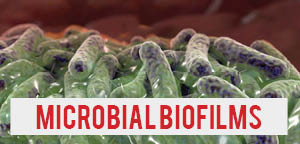
- Track 17-1Metabolic design
Microbial biotechnology is defined as any technological application that uses microbiological systems, microbial organisms, or derivatives thereof, to make or modify products or processes for specific use. Microbes (or microorganisms) are organisms that are too small to be seen by the unaided eye. They include bacteria, fungi, protozoa, microalgae, and viruses. Microbes live in familiar settings such as soil, water, food, and animal intestines, as well as in more extreme settings such as rocks, glaciers, hot springs, and deep-sea vents. Microbial biotechnology, enabled by genome studies, will lead to breakthroughs such as improved vaccines and better disease-diagnostic tools, improved microbial agents for biological control of plant and animal pests, modifications of plant and animal pathogens for reduced virulence, development of new industrial catalysts and fermentation organisms, and development of new microbial agents for bioremediation of soil and water contaminated by agricultural runoff. The wide variety of microbial habitats reflects an enormous diversity of biochemical and metabolic traits that have arisen by genetic variation and natural selection in microbial populations. For thousands of years, microorganisms have been used to supply products such as bread, beer and wine. Microbial genomics and microbial biotechnology research is critical for advances in food safety, food security, biotechnology, value-added products, human nutrition and functional foods, plant and animal protection, and furthering fundamental research in the agricultural sciences.
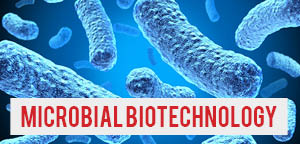
- Track 18-1Protein engineering
- Track 18-2Bionanotechnology
- Track 18-3Metabolic engineering
Infection is the invasion of an organism's body tissues by disease-causing agents, their multiplication, and the reaction of host tissues to the infectious agents and the toxins they produce. Infectious disease, also known as transmissible disease or communicable disease, is illness resulting from an infection. Infections are caused by infectious agents including viruses, viroids, prions, bacteria, nematodes such as parasitic roundworms and pinworms, arthropods such as ticks, mites, fleas, and lice, fungi such as ringworm, and other macroparasites such as tapeworms and other helminths.Specific medications used to treat infections include antibiotics, antivirals, antifungals, antiprotozoals, and antihelminthics. Pathogenic microbes challenge the immune system in many ways. Immunity is the capability of multicellular organisms to resist harmful microorganisms from entering it. Immunity involves both specific and nonspecific components. The nonspecific components act as barriers or eliminators of a wide range of pathogens irrespective of their antigenic make-up. Other components of the immune system adapt themselves to each new disease encountered and can generate pathogen-specific immunity. In response to infection, your immune system springs into action. White blood cells, antibodies, and other mechanisms go to work to rid your body of the foreign invader. Indeed, many of the symptoms that make a person suffer during an infection—fever, malaise, headache, rash—result from the activities of the immune system trying to eliminate the infection from the body. This session covers the border area of Infection & Immunity and their outcomes.
Public health is "the science and art of preventing disease, prolonging life and promoting human health through organized efforts and informed choices of society, organizations, public and private, communities and individuals". Public health aims to improve the quality of life through prevention and treatment of disease, including mental health. This is done through the surveillance of cases and health indicators, and through the promotion of healthy behaviors. Public health refers to all organized measures to prevent disease, promote health, and prolong life among the population. Its activities aim to provide conditions in which people can be healthy and focus on entire populations, not on individual patients or diseases. Modern public health practice requires multidisciplinary teams of public health workers and professionals. Teams might include epidemiologists, biostatisticians, medical assistants, public health nurses, midwives or medical microbiologists. Depending on the need environmental health officers or public health inspectors, bioethicists, and even veterinarians, Gender experts, Sexual and reproductive health specialists. Epidemiology is the study and analysis of the distribution (who, when, and where) and determinants of health and disease conditions in defined populations. It is the cornerstone of public health, and shapes policy decisions and evidence-based practice by identifying risk factors for disease and targets for preventive healthcare. Epidemiologists help with study design, collection, and statistical analysis of data, amend interpretation and dissemination of results (including peer review and occasional systematic review). Epidemiology has helped develop methodology used in clinical research, public health studies, and, to a lesser extent, basic research in the biological sciences.

Recombinant DNA technology, joining together of DNA molecules from two different species that are inserted into a host organism to produce new genetic combinations that are of value to science, medicine, agriculture, and industry. Recombinant DNA (rDNA) molecules are DNA molecules formed by laboratory methods of genetic recombination (such as molecular cloning) to bring together genetic material from multiple sources, creating sequences that would not otherwise be found in the genome. Recombinant DNA technology is used extensively in research laboratories worldwide to explore myriad questions about gene structure, function, expression pattern, regulation, and much more. Molecular cloning is the laboratory process used to create recombinant DNA. It is one of two most widely used methods, along with polymerase chain reaction (PCR), used to direct the replication of any specific DNA sequence chosen by the experimentalist. Recombinant DNA techniques are also a cornerstone of the biotechnology industry. This session covers all the aspects in Recombinant DNA Technology.
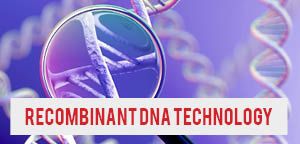
- Track 21-1Southern Blot
- Track 21-2PCR (polymerase chain reaction)
- Track 21-3Cloning
- Track 21-4 DNA sequencing of a gene
- Track 21-5Enzyme Mapping
- Track 21-6Genome Identification
- Track 21-7Gene Manipulation
Microorganisms plays an important role in our day to day life, it has become our part and parcel of our life. Microbiome is an essential component of immunity and a functional entity that influences metabolism and modulates drug interactions. It has been known since long time that microorganisms in the human body play an important role in maintaining human health. Certain microbes can help us in the fight against other microbes. Microbes are a source of antibiotics and vaccines. They are found in human and veterinary medicine, that are used to treat and prevent infectious diseases. The microbes that normally live in association with humans on the various surfaces of the body (called the normal flora), such as Lactobacillus and Bifidobacterium, are known to protect their hosts from infections and otherwise promote nutrition and health. They have both positive and negative effects of health in the animal kingdom. This track covers all the advantages and disadvantages of Microbes.
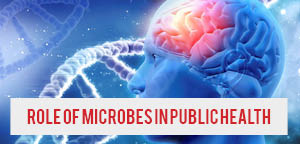
- Track 22-1Microbial Genomics
Theoretical and Practical aspects of Microbiology session cover the research topics like basic microbiology, experimental microbiology and case studies. It also includes mathematical modelling of organisms, Genomic Studies, Recombinant DNA Technology studies, Microbial Strain improvement, identification, isolation, improvement, Genome sequencing of new Microorganisms, Drug analysis in microorganisms, discovering the proteins and enzymes of microorganisms and many more studies. Practical approach is nothing but the implementation of theoretical hypothesis to obtain its expects.
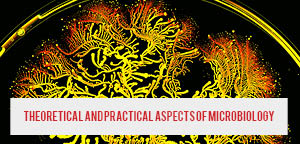
Microbiology & Molecular Biology is session for their microbial and molecular studies. Microbiology is the study of microorganisms and their activities (whether unicellular, multicellular or acellular). Molecular Biology deals with the basis (structure and function) of all biological interactions between biomolecules (nucleic acids and proteins) in various cell systems. It also includes topics like gene expression and regulation, pathogenicity and virulence, physiology and metabolism, synthesis of macromolecules (proteins, nucleic acids, lipids, polysaccharides, etc), cell biology and subcellular organization, membrane biogenesis and function, traffic and transport, cell-cell communication and signaling pathways, evolution and gene transfer of microorganisms.

- Track 24-1Molecular Genetics
- Track 24-2Prokaryotic and Eukaryotic Organisms
- Track 24-3Microbial Genetics
- Track 24-4Microbial Ecology
A vaccine is a biological preparation that provides active acquired immunity to a particular disease. A vaccine typically contains an agent that resembles a disease-causing microorganism and is often made from weakened or killed forms of the microbe, its toxins, or one of its surface proteins. The agent stimulates the body's immune system to recognize the agent as a threat, destroy it, and to further recognize and destroy any of the microorganisms associated with that agent that it may encounter in the future. Vaccines can be prophylactic or therapeutic. Vaccines can be produced in four stages Antigen generation, cultivating or isolating the Antigens, Antigen purification, Adjuvant additions & Vaccine formulation. An antibiotic is a type of antimicrobial drug used in the treatment and prevention of bacterial infections. They may either kill or inhibit the growth of bacteria. A limited number of antibiotics also possess antiprotozoal activity. Antibiotics are not effective against viruses such as the common cold or influenza; drugs which inhibit viruses are termed antiviral drugs or antivirals rather than antibiotics. Antiviral drugs are a class of medication used specifically for treating viral infections rather than bacterial ones. Most antivirals are used for specific viral infections, while a broad-spectrum antiviral is effective against a wide range of viruses. Antibiotics are not the same as vaccines. Some antibiotics act by killing the bacteria while others prevent the bacteria from multiplying, leaving your own immune system to 'mop them up'. Vaccines are used to prevent infection, particularly viral infections. Antibiotics can be produced in four stages like Microbial Culture preparation, Fermentation, Isolation & Purification of antibiotics, Antibiotics refining, Quality Control of Antibiotics. This session covers the researches in Vaccines and Antibiotics.
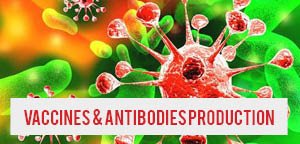
Virology is the scientific discipline concerned with the study of the biology of viruses and viral diseases, including the distribution, biochemistry, physiology, molecular biology, ecology, evolution and clinical aspects of viruses. Viruses also cause serious diseases in plants and livestock. Viruses have been implicated in a disease that is ravaging our honeybees, threatening natural pollination cycles and thus much of agriculture.
Pathology is the study of the essential nature of diseases, especially of the structural and functional changes in body tissues and organs that cause or are caused by disease due to deviation from propriety. Pathology precisely refers to the study of the origin, nature, and course of diseases. Pathology deals with the laboratory examination of samples of body tissue for diagnostic or forensic purposes.
Microbial Chemistry is the study of metabolism inside the microorganisms for its survival and products. Microorganisms has 4 growth stages such as lag phase, Growth phase, Stationary Phase and Death Phase. During the Growth phase microorganisms produce metabolites for its growth and reproduction but in stationary phase they produce metabolites for its survival and other secondary products like enzymes, proteins, peptides which has many benefits, i.e. In Industries these microorganisms are cultivated in larger quantity to get these secondary metabolites or by-products. So Microbial chemistry is the study to know depth of the microorganisms, Microbial Kinetics and their biochemistry. Microbes metabolize the substrate to obtain energy and nutrients, this study also includes their Microbial Proliferation and nurturing of a cellular steady state by up taking and usage of inorganic and organic compounds.
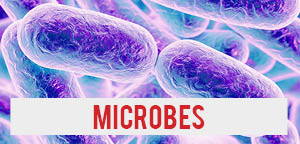
- Track 28-1Microbial Nutrient Cycles (Nitrogen, Sulfur, Carbon, Phosphorous, Iron)
- Track 28-2Microbial growth Kinetics
- Track 28-3Microbial Metabolism
- Track 28-4Methylotrophy
- Track 28-5Microbial Biochemistry
- Track 28-6Geomicrobiology
Bacteriology is the branch and specialty of biology that studies the morphology, ecology, genetics and biochemistry of bacteria as well as many other aspects related to them. This subdivision of microbiology involves the identification, classification, and characterization of bacterial species. Because of the similarity of thinking and working with microorganisms other than bacteria, such as protozoa, fungi, and viruses, there has been a tendency for the field of bacteriology to extend as microbiology. The bacteria can be grouped on the basis of physical, chemical, and biologic characteristics. In recent years, medical scientists have concentrated on the study of pathogenic mechanisms and host defenses. Parasitology is the study of parasites, their hosts, and the relationship between them. As a biological discipline, the scope of parasitology is not determined by the organism or environment in question, but by their way of life. This means it forms a synthesis of other disciplines and draws on techniques from fields such as cell biology, bioinformatics, biochemistry, molecular biology, immunology, genetics, evolution and ecology. Parasitology is the scientific discipline concerned with the study of the biology of parasites and parasitic diseases, including the distribution, biochemistry, physiology, molecular biology, ecology, evolution and clinical aspects of parasites, including the host response to these agents. Parasitology is the scientific discipline concerned with the study of the biology of parasites and parasitic diseases, including the distribution, biochemistry, physiology, molecular biology, ecology, evolution and clinical aspects of parasites, including the host response to these agents.
Basic reactions connected with anti-microbial incorporate loose bowels, heartburn and bloating, loss of craving and feeling debilitated, as indicated by NHS Choices. Antibiotic medications increment skin affectability to both common and simulated light. Anti-infection utilize can disturb the adjustments of microbes in the body, prompting to vaginal diseases in women and bringing on agitated stomach. Abuse of antibiotics can prompt to bacterial resistance. More side effects include Nausea, vomiting, headache, fever and swelling of face too.

Clinical Microbiology is a branch of medical science concerned with the prevention, diagnosis and treatment of infectious diseases. Moreover, this field of science is concerned about various clinical applications of microbes for the improvement of health. An antimicrobial is an agent that kills microorganisms or stops their growth. Antimicrobial medicines can be grouped according to the microorganisms they act primarily against. For example, antibiotics are used against bacteria and antifungals are used against fungi. They can also be classified according to their function. Agents that kill microbes are called microbicidal, while those that merely inhibit their growth are called biostatic. The use of antimicrobial medicines to treat infection is known as antimicrobial chemotherapy, while the use of antimicrobial medicines to prevent infection is known as antimicrobial prophylaxis. The main classes of antimicrobial agents are disinfectants ("nonselective antimicrobials" such as bleach), which kill a wide range of microbes on non-living surfaces to prevent the spread of illness, antiseptics (which are applied to living tissue and help reduce infection during surgery), and antibiotics (which destroy microorganisms within the body). The term "antibiotic" originally described only those formulations derived from living organisms but is now also applied to synthetic antimicrobials, such as the sulphonamides, or fluoroquinolones. The term also used to be restricted to antibacterials (and is often used as a synonym for them by medical professionals and in medical literature), but its context has broadened to include all antimicrobials. Antibacterial agents can be further subdivided into bactericidal agents, which kill bacteria, and bacteriostatic agents, which slow down or stall bacterial growth. In response, further advancements in antimicrobial technologies have resulted in solutions that can go beyond simply inhibiting microbial growth. Instead, certain types of porous media have been developed to kill microbes on contact.
Soil microbiology is the investigation of creatures in soil, their capacities, and how they influence soil properties. It is trusted that in the vicinity of two and four billion years back, the primary old microscopic organisms and microorganisms came to fruition in Earth's seas. These microbes could settle nitrogen, in time duplicated and accordingly discharged oxygen into the air. This prompted further developed microorganisms. Microorganisms in soil are critical on the grounds that they influence soil structure and fruitfulness. Soil microorganisms can be named microscopic organisms, actinomycetes, parasites, green growth and protozoa. Each of these gatherings has qualities that characterize them and their capacities in soil. Up to 10 billion bacterial cells occupy every gram of soil in and around plant roots, a district known as the rhizosphere. In 2011, a group identified more than 33,000 bacterial and archaeal species on sugar beet roots. The organization of the rhizobiome can change quickly because of changes in the encompassing condition.
Clinical or therapeutic virology is a branch of drug (all the more especially of clinical pathology) which comprises in confining or potentially in portraying one or a few infections in charge of some human pathologies by different immediate or roundabout systems (cell Cultures, serologies, natural chemistry, sub-atomic science). It additionally comprises in demonstrating the nonattendance of resistance of infections in treatment antiviral by viral genome sequencing to adjust antiviral therapeutics, best case scenario. Contamination is the intrusion of a living being's body tissues by sickness causing specialists, their increase, and the response of host tissues to these living beings and the poisons they produce. Infectious malady, otherwise called transmissible ailment or transferable ailment, is disease coming about because of a contamination. Contaminations are caused by irresistible operators including infections, viroids, prions, microscopic organisms, nematodes, for example, parasitic roundworms and pinworms, arthropods, for example, ticks, bugs, bugs, and lice, growths, for example, ringworm, and different macroparasites, for example, tapeworms and different helminths. Hosts can battle diseases utilizing their safe framework. Mammalian hosts respond to diseases with an inborn reaction, regularly including aggravation, trailed by a versatile response. Particular solutions used to treat contaminations incorporate anti-infection agents, antivirals, antifungals, antiprotozoals, and antihelminthics. Irresistible illnesses brought about 9.2 million passings in 2013 (around 17% of all deaths). The branch of medication that spotlights on contaminations is alluded to as irresistible disease.
Too little to be seen never again implies too little to be in any way examined or esteemed. Microbial decent variety envelops the range of inconstancy among a wide range of microorganisms (microscopic organisms, growths, infections and some more) in the characteristic world and as adjusted by human mediation. The assorted variety of a microbial consortium can shift and change with ecological elements (working parameters) like for instance temperature, ammonium fixation and CO2 focus. Diverse sorts of microorganisms can some of the time perform distinctive capacities and some of the time supplement each other. Microscopic organisms are the most assorted and rich gathering of creatures on Earth. Endeavors to portray bacterial decent variety and wealth regularly yield amazing numbers. For instance, there are reports that there is one billion times more individual microscopic organisms on earth than stars in the universe, that the quantity of prokaryotic species surpasses that of every other specie, that prokaryotic cells contain the greater part of all biomass, and that even the most antagonistic natural surroundings are possessed by microorganisms. Prior to the presentation of phylogenetic data via Carl Woese in 1987, microbiologists utilized morphological and physiological properties to separate between bacterial species (see: [http://home.earthlink.net/~douglaspage/id30.html A Tale of Woese). This prompted the depiction of for instance Pseudomonas (from Greek: pseudes: false and monas: unit) which in truth involved no less than five distinct gatherings of microscopic organisms. In any case, the advances of atomic strategies, notwithstanding their confinements and predispositions, have prompted an expanded comprehension of bacterial assorted variety. Today there exist various atomic devices, for instance 16S rRNA clone libraries ,trailed by Temperature - or Denaturation Gradient Gel Electrophoresis (DGGE), Fluorescence In Situ Hybridization (FISH), and Quantitative Dot Blot Hybridization.
A biofuel is a fuel that is delivered through contemporary organic procedures, for example, agribusiness and anaerobic assimilation, instead of a fuel created by land procedures, for example, those associated with the development of non-renewable energy sources, for example, coal and oil, from ancient natural issue. Biofuels can be gotten specifically from plants, or by implication from farming, business, residential, or potentially mechanical squanders. Inexhaustible biofuels by and large include contemporary carbon obsession, for example, those that happen in plants or microalgae through the procedure of photosynthesis. Other sustainable biofuels are made through the utilization or transformation of biomass (alluding to as of late living beings, regularly alluding to plants or plant-determined materials). This biomass can be changed over to helpful vitality containing substances in three diverse ways: warm transformation, concoction change, and biochemical change. This biomass transformation can bring about fuel in strong, fluid, or gas frame. This new biomass can likewise be utilized specifically for biofuels. Bioethanol is a liquor made by maturation, for the most part from starches created in sugar or starch harvests, for example, corn, sugarcane, or sweet sorghum. Cellulosic biomass, got from non-nourishment sources, for example, trees and grasses, is likewise being created as a feedstock for ethanol generation. Ethanol can be utilized as a fuel for vehicles in its unadulterated shape, however it is normally utilized as a gas added substance to expand octane and enhance vehicle discharges. Bioethanol is broadly utilized as a part of the United States and in Brazil. Current plant configuration does not accommodate changing over the lignin part of plant crude materials to fuel segments by maturation. Biodiesel can be utilized as a fuel for vehicles in its unadulterated frame, however it is normally utilized as a diesel added substance to lessen levels of particulates, carbon monoxide, and hydrocarbons from diesel-controlled vehicles. Biodiesel is created from oils or fats utilizing transesterification and is the most widely recognized biofuel in Europe.
Cell science or cytology, is a branch of science that reviews the diverse structures and elements of the cell and concentrates for the most part on the possibility of the cell as the fundamental unit of life. Molecular biology concerns the molecular basis of biological activity between biomolecules in the various systems of a cell, including the communications between DNA, RNA, and proteins and their biosynthesis, and the direction of these cooperations. Molecular genetics is the field of biology that studies the structure and function of genes at a molecular level and thus employs methods of both molecular biology and genetics. The study of chromosomes and gene expression of an organism can give insight into heredity, genetic variation, and mutations. This is useful in the study of developmental biology and in understanding and treating genetic diseases.
Rural microbiology is a branch of microbiology managing plant-related microorganisms and plant and creature infections. It additionally manages the microbiology of soil fruitfulness, for example, microbial debasement of natural issue and soil supplement changes. Done by Alpha B S Conteh of Njala University. Microscopic organisms:- more prevailing gathering of microorganisms in the dirt and equivalent to one portion of the microbial biomass in soil. Populace 100,000 to a few hundred millions for gram of soil - Autochthnous - Zymogenous gatherings. Dominant part are Heterotrophs. (Basic soil microscopic organisms - Arthrobacter, Bacillus, Clostridium, Micrococcus). Actinomycetes - moderate gathering amongst microbes and organisms. Various and generally circulated in soil. Plenitude is by microscopic organisms. 104 - 108/g soil. 70% of soil actinomycetes are Streptomyces. A significant number of them are known to create anti-toxins. Populace increments with profundity of soil. Parasites: More various in surface layers of very much circulated air through and developed soils-prevailing in corrosive soils. Basic genera in soil are Aspergillus, Mucor, Penicillium Trichoderma, Alternaria, Rhizopus. Green growth – found in the majority of the dirts in number reaches from 100 to 10,000 for every g. Protozoa: Unicellular – populace ranges from 10,000 to 100,000 for every g of soil. The greater part of the dirt structures are lashes, amoebae or ciliates. Infer their sustenance by eating up soil microscopic organisms. Plentiful in upper bigger of the dirt. They are directing the natural balance in soil.
Veterinary Microbiology is worried about microbial (bacterial, parasitic, viral) ailments of tamed vertebrate creatures (domesticated animals, partner creatures, hide bearing creatures, amusement, poultry, yet barring fish) that supply sustenance, other valuable items or camaraderie. Likewise, Microbial sicknesses of wild creatures living in bondage, or as individuals from the non domesticated fauna will likewise be considered if the diseases are of intrigue in light of their interrelation with people (zoonoses) as well as residential creatures. Investigations of antimicrobial resistance are likewise included, given that the outcomes speak to a considerable progress in learning. Writers are unequivocally urged to peruse - preceding accommodation - the Editorials ('Scope or adapt' and 'Extension or adapt II') distributed beforehand in the diary. The Editors maintain whatever authority is needed to propose accommodation to another diary for those papers which they feel would be more fitting for thought by that diary. Unique research papers of high caliber and oddity on parts of control, have reaction, sub-atomic science, pathogenesis, anticipation, and treatment of microbial illnesses of creatures are distributed. Papers managing essentially with immunology, the study of disease transmission, atomic science and antiviral or microbial operators may be considered on the off chance that they show an unmistakable effect on an illness. Papers concentrating exclusively on analytic methods, (for example, another PCR convention or ELISA) won't be distributed - concentrate ought to be on a microorganism and not on a specific strategy. Papers just revealing microbial successions, metagenomics information, transcriptomics information, or proteomics information won't be viewed as unless the outcomes speak to a generous progress in learning identified with microbial malady. Medication trial papers will be considered on the off chance that they have general application or hugeness. Papers on the distinguishing proof of microorganisms will likewise be considered, however point by point ordered investigations don't fall inside the extent of the diary. Case reports won't be distributed, unless they have general application or contain novel perspectives. Papers of topographically restricted intrigue, which rehash what had been set up somewhere else won't be considered. The readership of the diary is worldwide.
Frameworks science is the computational and numerical demonstrating of complex natural frameworks. It is a science based interdisciplinary field of concentrate that spotlights on complex communications inside natural frameworks, utilizing an all-encompassing methodology (comprehensive quality rather than the more conventional reductionism) to organic research. Especially from year 2000 onwards, the idea has been utilized broadly in science in an assortment of settings. The Human Genome Project is a case of connected frameworks thinking in science which has prompted new, community oriented methods for taking a shot at issues in the natural field of genetics. One of the exceeding points of frameworks science is to display and find developing properties, properties of cells, tissues and creatures working as a framework whose hypothetical portrayal is just conceivable utilizing strategies of frameworks biology. These commonly include metabolic systems or cell flagging networks. Bioinformatics is an interdisciplinary field that creates strategies and programming apparatuses for understanding organic information. As an interdisciplinary field of science, bioinformatics joins software engineering, insights, arithmetic, and building to dissect and decipher organic information. Bioinformatics has been utilized for in silico investigations of natural questions utilizing numerical and measurable methods. Bioinformatics is both an umbrella term for the assortment of natural investigations that utilization PC programming as a major aspect of their system, and additionally a reference to particular examination "pipelines" that are over and over utilized, especially in the field of genomics. Normal employments of bioinformatics incorporate the recognizable proof of applicant qualities and single nucleotide polymorphisms (SNPs). Frequently, such ID is improved with the point of understanding the hereditary premise of sickness, one of a kind adjustments, alluring properties (esp. in horticultural species), or contrasts between populaces. In a less formal manner, bioinformatics likewise tries to comprehend the authoritative standards inside nucleic corrosive and protein successions, called proteomics.
Pharmaceutical Microbiology is a connected branch of Microbiology. It includes the investigation of microorganisms related with the produce of pharmaceuticals e.g. limiting the quantity of microorganisms in a procedure situation, barring microorganisms and microbial side-effects like exotoxin and endotoxin from water and other beginning materials, and guaranteeing the completed pharmaceutical item is sterile. Other parts of pharmaceutical microbiology incorporate the innovative work of hostile to infective operators, the utilization of microorganisms to identify mutagenic and cancer-causing movement in forthcoming medications, and the utilization of microorganisms in the fabricate of pharmaceutical items like insulin and human development hormone.
Microbial transformation is defined as the biological process of modifying an organic compound into a reversible product. It involves the use of chemically defined enzyme catalyzed reactions in the living cells.
Oil microbiology is a branch of microbiology that arrangements with the investigation of microorganisms that can utilize or adjust rough or refined oil based goods. These microorganisms, likewise called hydrocarbonoclastic microorganisms, can debase hydrocarbons and, incorporate a wide dissemination of microscopic organisms, methanogenic archaea, and a few growths. Not all hydrocarbonoclasic microorganisms rely upon hydrocarbons to survive, however rather may utilize oil based goods as option carbon and vitality sources. Enthusiasm for this field is becoming because of the expanding part of bioremediation in oil slick cleanup.
Down to earth rules for the conclusion and treatment of unending prostatitis are exhibited. Interminable prostatitis is delegated ceaseless bacterial prostatitis (culture-positive) and perpetual fiery prostatitis (culture-negative). In the event that constant bacterial prostatitis is suspected, in view of important indications or intermittent UTIs, fundamental urological conditions ought to be rejected by the accompanying tests: rectal examination, midstream urine culture and lingering urine. The determination ought to be affirmed by the Meares and Stamey strategy. Antibiotic treatment is prescribed for intense intensifications of unending prostatitis, endless bacterial prostatitis and perpetual provocative prostatitis, if there is clinical, bacteriological or supporting immunological proof of prostate contamination. Unless a patient presents with fever, anti-microbial treatment ought not to be started quickly aside from in instances of intense prostatitis or intense scenes in a patient with ceaseless bacterial prostatitis.

Enzyme technology broadly involves production, isolation, purification and use of enzymes (in soluble or immobilized form) for the ultimate benefit of humankind. In addition, recombinant DNA technology and protein engineering involved in the production of more efficient and useful enzymes are also a part of enzyme technology. Enzymes are the biocatalysts synthesized by living cells. They are complex protein molecules that bring about chemical reactions concerned with life. It is fortunate that enzymes continue to function (bring out catalysis) when they are separated from the cells i.e. in vitro. Basically, enzymes are nontoxic and biodegradable. They can be produced in large amounts by microorganisms for industrial applications. The biocatalysts (enzymes and cells) are used in multifarious ways in different field. Scientists has grouped the applications like therapeutic uses, analytical uses, manipulative uses, industrial purpose. It has the border range like food production, food processing and preservation, washing powders, textile manufacture, leather industry, paper industry, medical applications, and improvement of environment and in scientific research. Enzymes has produced in larger scale in Industries for various purposes they have converted into proteins, peptides, vitamins, antibodies, vaccines, antibiotics and many more. This session also covers Enzyme and Enzyme Technology applications, advantages and their advancements.

Key to all great antibiotic (or any other) treatment is conclusion to the principles. At whatever point an anti-infection is endorsed it ought to be for a particular finding whether it is a conditional clinical conclusion or not. An anti-infection ought not to be endorsed for a "urinary tract contamination" it ought to be recommended for cystitis, pyelonephritis or prostatitis for instance. Recommending and antibiotic for a "hack" is incredible. Hack could be a side effect of many conditions with pneumonia or serious COPD intensification being the main particular conditions for which anti-microbial treatment is demonstrated. Every time you mull over solution of an anti-microbial choose a particular determination. Your antibiotic decisions can then be educated by trusted treatment rules, for example, these made in the Vancouver Island Health Authority.
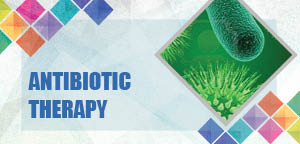
Antibiotics are resulting of optional digestion system which restrains development procedures of different life forms notwithstanding when utilized at low fixations. The antibiotic penicillin was found by Fleming in 1929. Albeit more than 300 anti-microbial mixes have been separated just 123 are as of now delivered by aging. Furthermore, more than 50 anti-microbials are created as semisynthetic mixes, and three anti-infection agents, chloramphenicol, phosphonomycin and pyrrolnitrin are delivered totally artificially.
